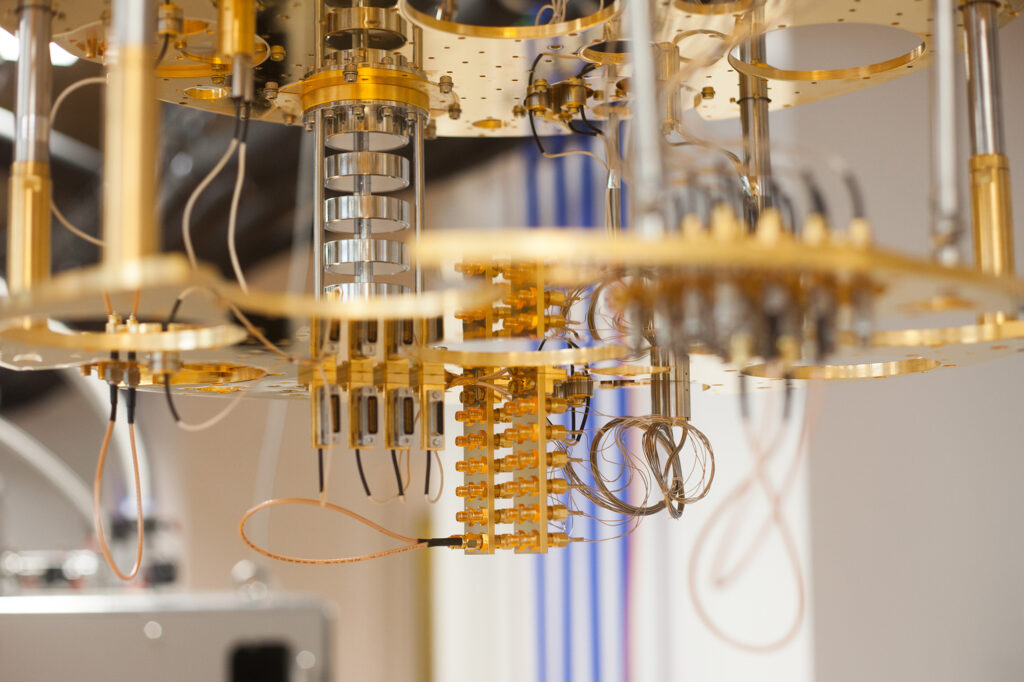09.12.2024Quantum Computing
Connecting qubit islands with quantum bridges

Researchers at QuTech have managed to, for the first time, perform coherent logic operations between spin qubits 250 micrometers apart on the same chip. Such ‘enormous’ distances create new opportunities for operations between qubits, as they normally only sustain over 100 nm. These results hold promise for scalable networks of spin qubit islands on a chip. The researchers published their results in Nature Physics.
To solve practical problems, quantum computers will need millions of reliable, error-free quantum bits (qubits). Various approaches to build qubits focus on modular designs to overcome scaling challenges. These islands might be on separate chips, boards, or even housed in different systems. For semiconductor spin qubits, their compact size and compatibility with semiconductor manufacturing make it possible to build a large-scale processor on just a single chip.
A bridge for quantum information
Spin-based qubits in quantum dots work by trapping single electrons or holes in small, controlled semiconductor structures. While nearby qubits can interact directly, connecting qubits over longer distances is challenging, but extremely helpful when aiming for millions of them on a single chip. Using superconducting resonators—tiny structures that act like bridges for quantum information—offers a way to efficiently connect qubits far apart.
In this study, researchers at QuTech—a collaboration between the TU Delft and TNO—successfully linked two spin-based qubits placed 250 micrometers apart using a superconducting resonator. The setup allows to control each qubit, measure their stability (coherence), and observe how they exchange information (iSWAP operation). The researchers also explored how factors like the qubits’ frequencies and their coupling strength with the resonator affected this interaction, and found they were consistent with theoretical predictions.

Next steps
The work is a key step toward building networks of spin qubits on a single chip and thereby a step forward in building scalable quantum processors. In the present experiment, each island contains a single qubit, but in the future, they could house multiple interconnected qubits, creating networks of islands that link even more qubits together. This increases the ability to scale up quantum processors significantly. Further reducing electrical noise and improving qubit-resonator coupling could support scalable spin qubit systems while also enabling new possibilities in quantum simulation. This allows the study of complex systems involving both particle-like (fermionic) and wave-like (bosonic) behaviors.
Publication details
Dijkema & Xue, et al., 2024, Cavity-mediated iSWAP oscillations between distant spins, Nature Physics, 1745-2481. DOI: 10.1038/s41567-024-02694-8

